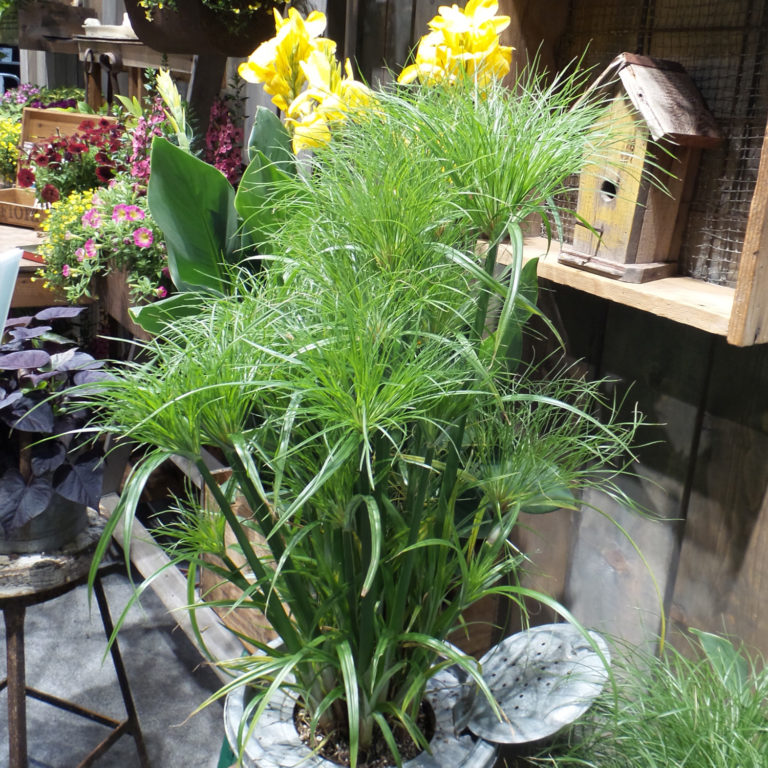

DWARF PAPYRUS KING TUT FULL
Light Exposure: Partial Sun to Full Sun (At Least 5 Hours of Direct Sunlight)įeatures: Deadheading Not Necessary, Foliage Interest, Low MaintenanceĬommon Name: Graceful Grasses® Queen Tut™ Dwarf Egyptian Papyrus Graceful Grasses® Queen Tut™ Dwarf Egyptian Papyrus Information USDA Hardiness Zones: 9 - 11 When using it in containers, choose one that is large to prevent Queen Tut from overcrowding. Plant Queen Tut 12-24 inches away from other plants to allow it room to grow. Queen Tut spreads less than many other Papyrus varieties. Graceful Grasses® Queen Tut™ Dwarf Egyptian Papyrus Spacing Queen Tut can either be brought indoors into a warm, sunny location, or can be discarded in the fall or spring once it has turned brown due to the cold. Because it is a cold-sensitive annual, it should not be expected to survive a winter with frost. Queen Tut is a low-maintenance plant and doesn’t require pruning. Queen Tut grows well in fertile soil and shouldn’t need additional fertilizer amending the soil with organic matter prior to planting will set this annual up for success. Once Queen Tut becomes established in a garden bed, it can be drought tolerant. When placing Queen Tut along a pond’s edge, be sure not to submerge the crown in water–the roots can survive in just a few inches of water. For this reason, it is important that when including Queen Tut in a mixed planter, you are choosing potting soil that retains moisture and pairing it with other water-loving annuals or perennials, such as Lysimachia or Sunpatiens. Keep the roots consistently moist, if not from a pond or rain garden then by watering frequently. Queen Tut is going to grow best in full to partial sun. Replace the usually ornamental annual grasses with this stunner to bring interesting shape and movement to your garden and planters! Graceful Grasses® Queen Tut™ Dwarf Egyptian Papyrus Care In the summer, it produces small, seed-like flowers at the ends of its little umbrella tops, not too dissimilar from what you might see on ornamental grasses. This papyrus grass is heat tolerant and deer and rabbit resistant. Queen Tut thrives in soggy and moist environments and doesn’t like to dry out. In addition to planters, Queen Tut can be grown in landscapes, in rain and water gardens, and along pond edges as a bog plant. This annual has a unique shape, with long, slender, sturdy stalks supporting wispy umbrella-like tops, looking kind of like bright green sparklers. Queen Tut ( Cyperus prolifer ) stands tall at 18-24 inches with minimal spreading, 12-18 inches wide. For evergreen grasses this wounding will really affect their ability to live through the winter.When looking for a thriller that truly thrills, look no further than Graceful Grasses® Queen Tut™ Dwarf Egyptian Papyrus.


Dividing plants wounds them to some degree. In areas where winter temperatures remain above 25 degrees it should be considered a perennial and the following information should be useful.Įvergreen or neutral grasses are usually plants that look like grasses but aren't actually classified as grasses, they are generally called grass-like plants.ĭivide evergreen or neutral grasses and grass-like plants in spring only.Įvergreen grasses don't ever go dormant. It should not be expected to live through the winter and begin growing again in the spring. Once the grass turns brown it can either be removed immediately or removed in the spring. Where temperatures get colder than 25 degrees F, the plants should be treated as annuals. It is best to keep the soil moist, but once established Baby Tut can tolerate some dry soil conditions.īaby Tut is an evergreen or neutral grass. If the plant is put into a pot I would suggest plugging the hole or holes in the bottom of the pot to keep as much water as possible in the potīaby Tut can also be planted in regular garden soil. The root ball can be submerged but it isn't necessary. The purpose is to keep the bulk of the soil or root mass wet. The crown of the plant should never be covered in water and in fact both of these varieties can thrive in water as shallow as a few inches. The plant can be planted in pots, along the waters edge of a pond, or even in a pond. It is a very fast grower and will quickly grow to impressive size when replanted in the spring. This plant can sometimes be aggressive in frost-free winter climates, if it is grown in constantly moist conditions. Cyperus is not hardy enough to survive winters with freezing temperatures and it is not a candidate to overwinter inside.


 0 kommentar(er)
0 kommentar(er)
